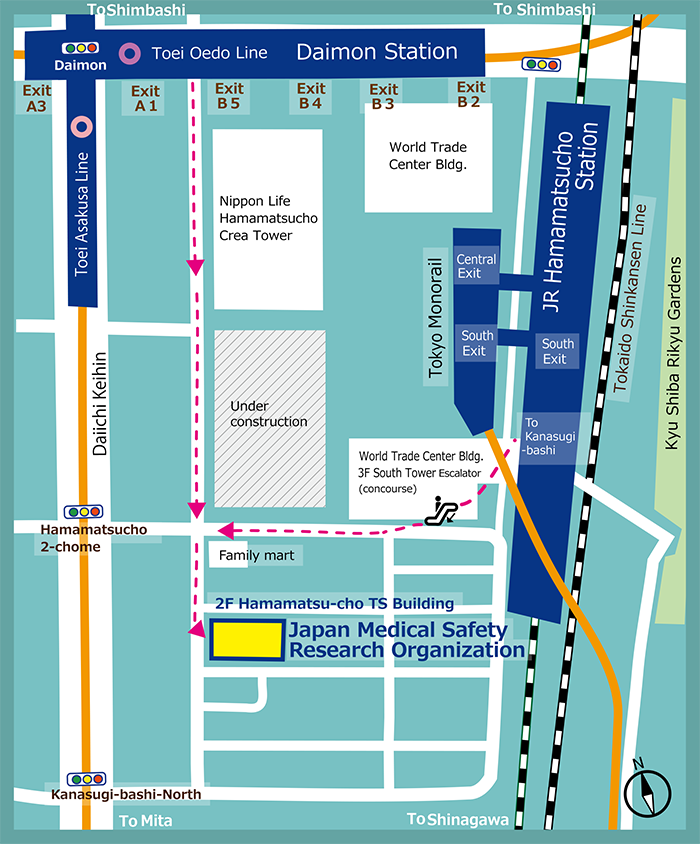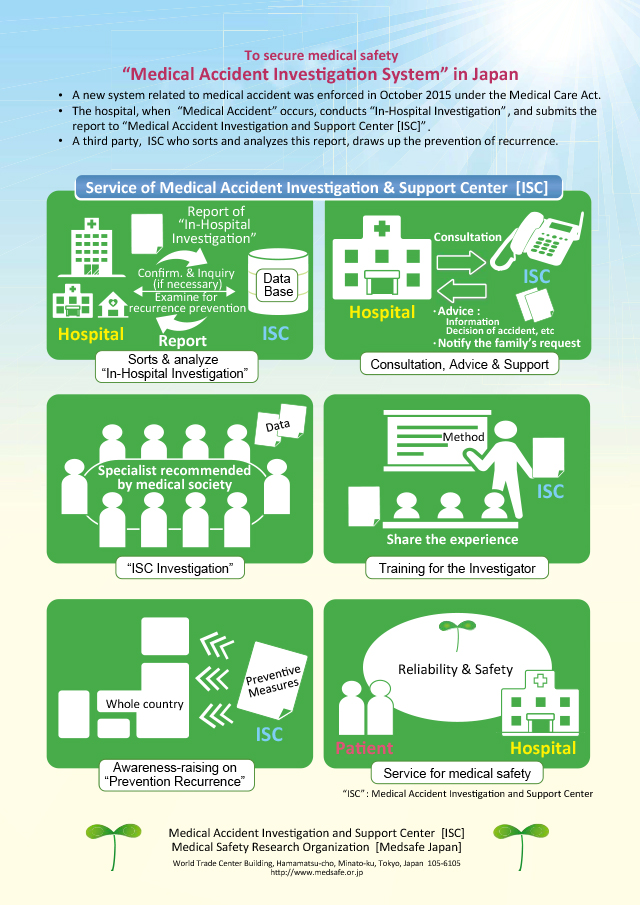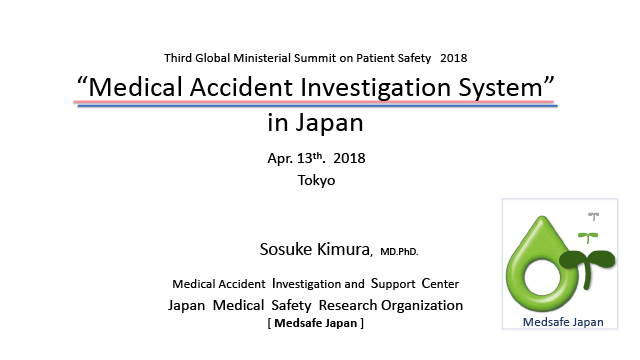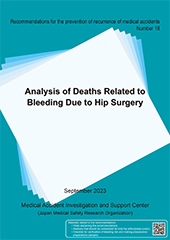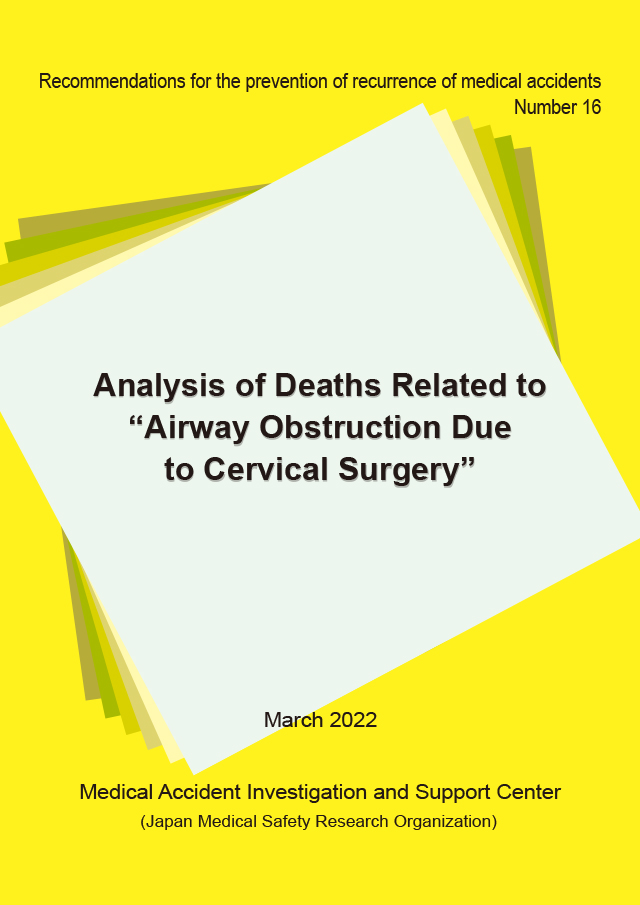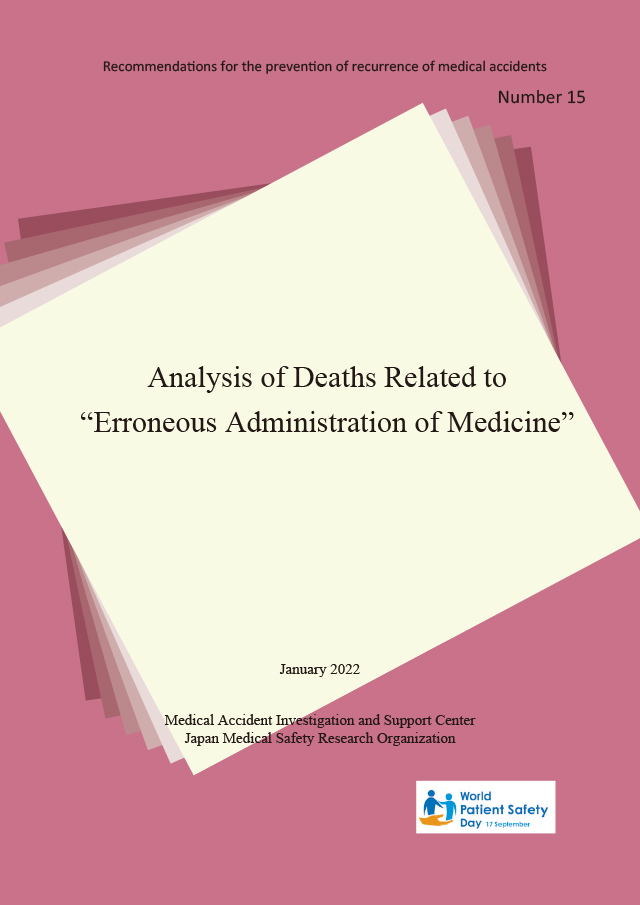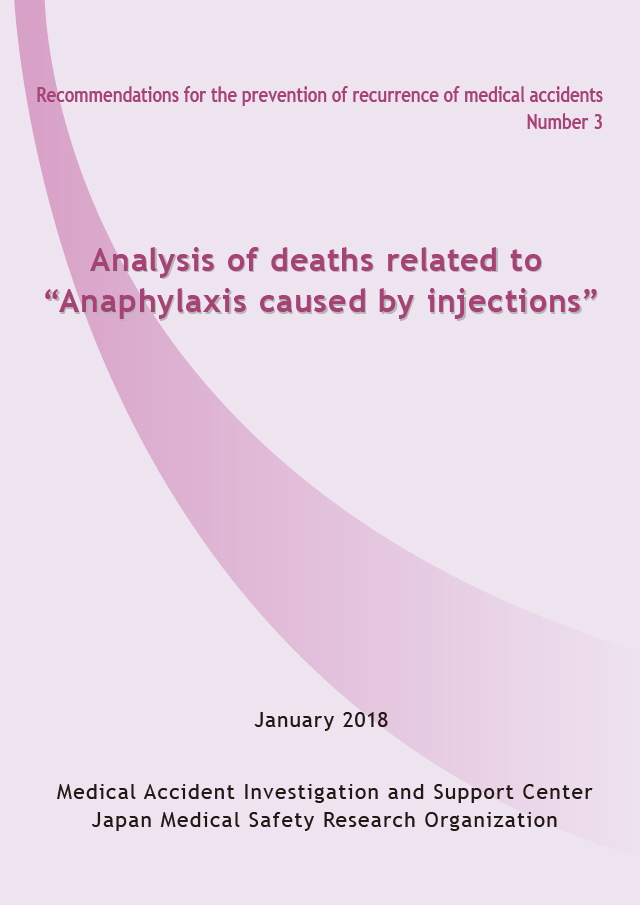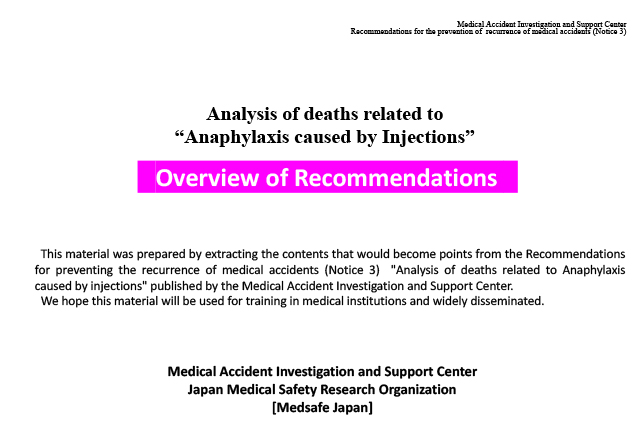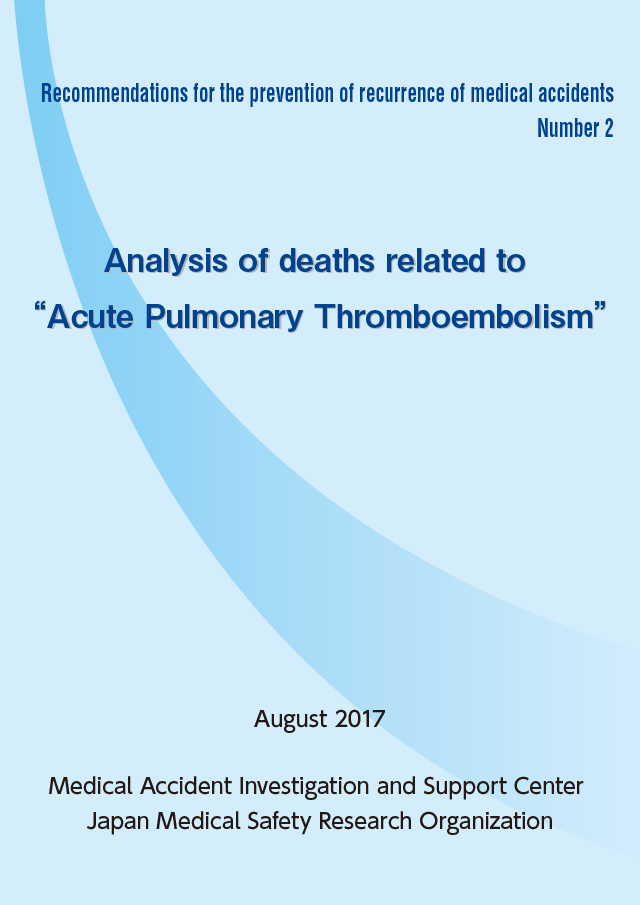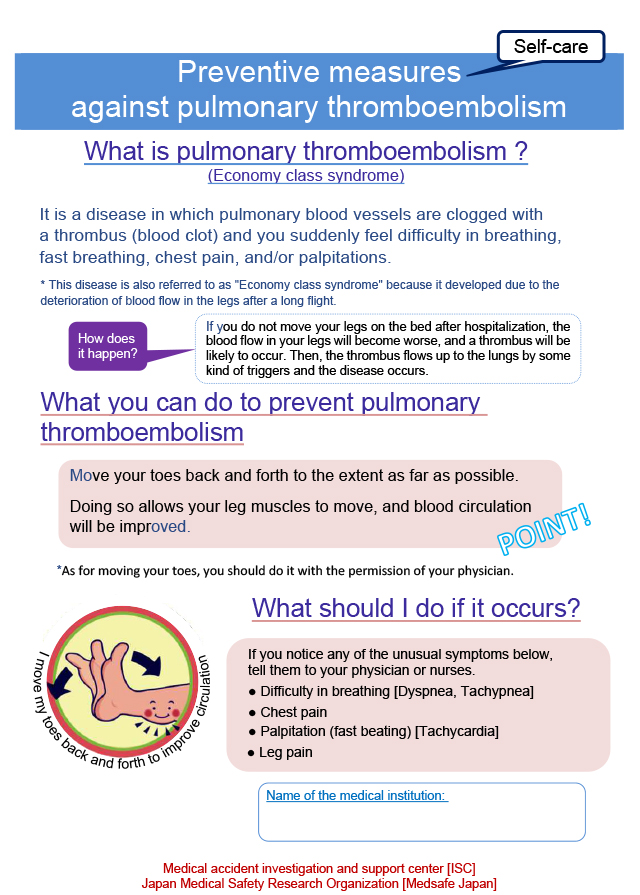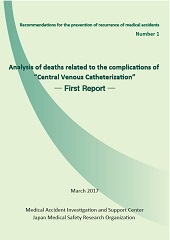last update: 2025/6/16
About Us
Mission
We contribute to the assurance of safety and improvement of quality in medical care through the analysis and dissemination of findings useful for the establishment of appropriate measures for accident prevention by means of information collection, verification, investigation, and training activities for prevention of medical accidents stipulated in Article 6-10 of the Medical Care Act based on expertise, neutrality, fairness, and transparency.
Date founded: April 1, 2010
Fumimaro Takaku
Chairman of the Boar
Message from the Chair
I am Takashi Kadowaki. I am honored to have been appointed Chairman of the Board of the Japan Medical Safety Research Organization (Medsafe Japan) on December 20, 2023.
Medsafe Japan was designated by the Minister of Health, Labour and Welfare as the “Medical Accident Investigation and Support Center” (“the Center”) in October 2015 under the “Medical Accidents Investigation System,” which was put into effect in accordance with the amendment of the Medical Care Act. It has been performing the functions of the Center since then.
The Medical Accidents Investigation System defines “medical accidents” as “unexpected deaths caused by provided medical care” and it obliges medical institutions in which such accidents have occurred to investigate the causes of death. Consequently, it requires investigation in all cases reported as medical accidents, which makes it an unprecedented system worldwide. Another characteristic is that the system places particular emphasis on the professional autonomy of medical practitioners by requiring medical institutions to conduct the investigation for themselves.
The Center accumulates, organizes, and analyzes in-hospital investigation results reported by medical institutions, summarizes them into “recommendations for the prevention of the recurrence of medical accidents.” As of the end of January 2024, the number of in-hospital investigation reports had reached 2,561. We recognize that returning these invaluable insights to the medical community plays a vital role that only the Center, where accident reports are accumulated, can play.
From the late 1990s through the 2000s, one medical accident after another developed into a major scandal and received heated media attention, thereby increasing social awareness about medical safety. Nineteen academic societies affiliated with the Japanese Association of Medical Sciences issued a joint statement on “Notifying Treatment-Related Deaths of Patients: Towards the Foundation of the Neutral Specialist Institution” in September 2004. The “Model Project for the Investigation and Analysis of Treatment-Related Deaths” managed by The Japanese Society of Internal Medicine, supported by the Ministry of Health, Labour, and Welfare, was commenced in September 2005 (a forerunner to Medsafe Japan).
Medsafe Japan was founded in April 2010 to take over the “model project” and commenced its operations as the Center under the “Medical Accidents Investigation System” in accordance with the amendment of Medical Care Act in October 2015, as mentioned above.
I have been involved with Medsafe Japan for a long time, having served as Vice Chairman of the Board when I was Chairman of The Japanese Society of Internal Medicine and later as Auditor.
I have also been engaged in the administration of medical institutions as Director of the University of Tokyo Hospital and as President of Toranomon Hospital. “Medical safety” has always been my everyday priority there.
Ensuring medical safety in a real-life medical setting involves following the PDCA cycle of collecting as many incidents as possible, analyzing them, establishing measures to prevent repetitions, and reflecting the measures in the hospital’s system. This cycle for improvement starts by reporting each incident. The more incidents are reported, the clearer risks will be identified, leading to more effective recurrence prevention measures.
The Medical Accidents Investigation System should aim to achieve this by requiring the investigation of all medical accidents.
It has been more than twenty years since people began to recognize “medical safety” as a social task and eight years since the “Medical Accidents Investigation System” was established and enforced. Medsafe Japan will strive to assure medical safety by working with this system, which is soon to mark its tenth anniversary.
February 2024
Takashi Kadowaki
Chairman of the Board
Japan Medical Safety Research Organization
History
| Sep 2004 | Nineteen academic societies affiliated with Japan MedicalAssociationissue a joint statement on “notifying treatment-related deaths of patients —towards the foundation of neutral specialist institution.” |
|---|---|
| Sep 2007 | “Project for the Investigation and Analysis Models of Treatment-Related Deaths,” supported by the Ministry of Health, Labour, and Welfare is commenced, with the Japanese Society of Internal Medicine as the operating entity. |
| Apr 2010 | The Japan Medical Safety Research Organization (JMSRO) is founded. JMSRO takes over the “Project for the Investigation and Analysis Models of Treatment-Related Deaths” supported by the Ministry of Health, Labour, and Welfare from the Japanese Society of Internal Medicine. |
| Jun 2014 | A partial revision of the Medical Care Act results in the issue of “Medical Accidents Investigation System,” which focuses on the investigation of accidents in hospitals (effective as of October 1, 2015) |
| Mar 2015 | The “Project for the Investigation and Analysis Models of Treatment- Related Deaths” supported by the Ministry of Health, Labour, and Welfare is terminated. |
| Aug 2015 | The Ministry of Health, Labour, and Welfare designates JMSRO as a “Medical Accident Investigation and Support Center” as a part of the Medical Accidents Investigation System. |
| Oct 2015 | The “Medical Accidents Investigation System” comes into effect. |
Our Work
We are in charge of the following operations stipulated in Article 6-16 of the Medical Care Act.
- We collect information on medical accidents from “medical accident reports” and “reports for the result of investigation on hospital accidents.”
- We organize and analyze information on medical accidents reported from medical institutions to investigate the measures to prevent the recurrence of such accidents, and return this to the society as an educational “proposal” of preventive measures for medical accidents.
- The Medical Accident Investigation and Support Center (hereinafter referred to as “the center”) will investigate reported cases of medical accidents stipulated in the Medical Care Act, if requested by the applicable medical institution or the family of the deceased, and report the results of the investigation to the medical institution or the family of the deceased.
- We conduct training based on knowledge and techniques related to the Medical Accidents Investigation System for the staff members of medical institutions and organizations supporting the investigations of medical accidents.
- We provide information and support required for consultation related to the investigation of medical accidents.
- We conduct other operations required to ensure safety in medical care.
Medical Accident Investigation System
To secure medical safety “Medical Accident Investigation System” in Japan
A new system related to medical accident was enforced in October 2015 under the Medical Care Act. The hospital, when “Medical Accident” occurs, conducts “In-Hospital Investigation”, and submits the report to “Medical Accident Investigation and Support Center [ISC]” A third party, ISC who sorts and analyzes this report, draws up the prevention of recurrence.
Recommendations for the preventon of recurrence of medical accidents
Number 19
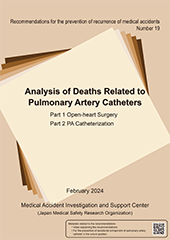
Analysis of Deaths Related to Pulmonary Artery Catheters Part 1 Open-heart Surgery Part 2 PA Catheterization
Number 17
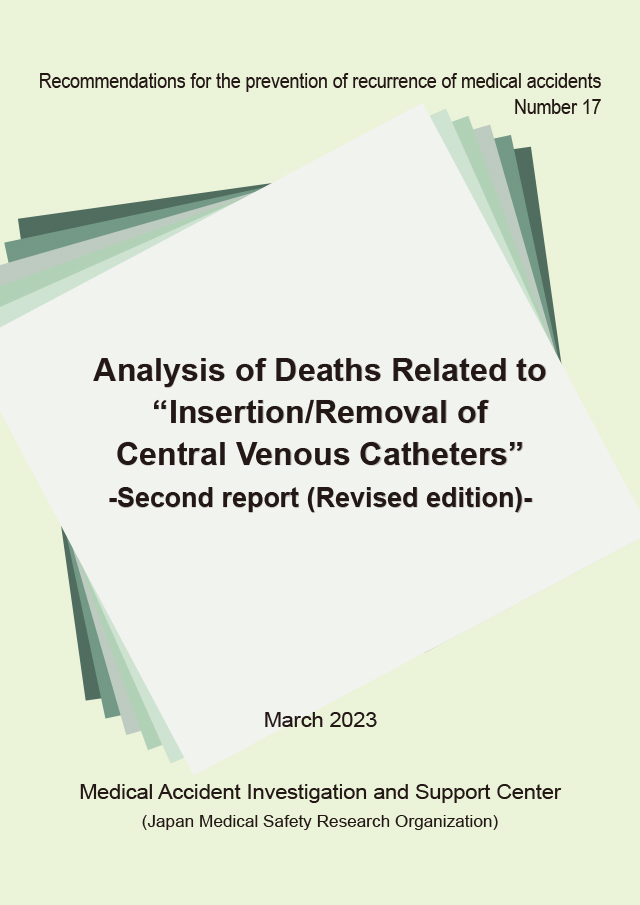
Analysis of Deaths Related to “Insertion/Removal of Central Venous Catheters” -Second report (Revised edition)-
Access
2F Hamamatsu-cho TS Building,
2-8-14, Hamamatsu-cho, Minato-ku, Tokyo 105-0013, Japan
Phone: +81-3-5401-3021
Fax: +81-3-5401-3022
Access Map
Hamamatsucho StationJR Yamanote Line, Keihin Tohoku Line and Tokyo Monorail
3 minutes walk from the south gate
(South gate, Kanasugibashi direction, go down the escalator in the south building of the World Trade Center Building, Kanasugibashi direction.)Daimon StationToei Subway Asakusa Line,Oedo Line
5 minutes walk from Gate B5
